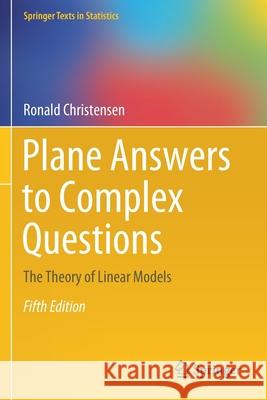Plane Answers to Complex Questions: The Theory of Linear Models » książka
topmenu
Plane Answers to Complex Questions: The Theory of Linear Models
ISBN-13: 9783030320997 / Angielski / Miękka / 2021 / 529 str.
Plane Answers to Complex Questions: The Theory of Linear Models
ISBN-13: 9783030320997 / Angielski / Miękka / 2021 / 529 str.
cena 332,24 zł
(netto: 316,42 VAT: 5%)
Najniższa cena z 30 dni: 327,68 zł
(netto: 316,42 VAT: 5%)
Najniższa cena z 30 dni: 327,68 zł
Termin realizacji zamówienia:
ok. 20 dni roboczych.
ok. 20 dni roboczych.
Darmowa dostawa!
Kategorie:
Kategorie BISAC:
Wydawca:
Springer
Seria wydawnicza:
Język:
Angielski
ISBN-13:
9783030320997
Rok wydania:
2021
Wydanie:
2020
Numer serii:
000022139
Ilość stron:
529
Waga:
0.76 kg
Wymiary:
23.39 x 15.6 x 2.84
Oprawa:
Miękka
Wolumenów:
01
Dodatkowe informacje:
Wydanie ilustrowane











